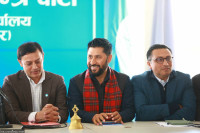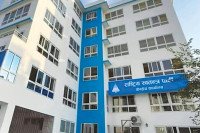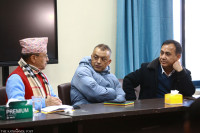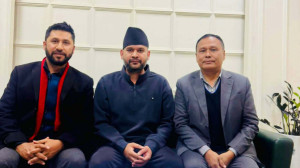Politics
In Nepal’s politics and governance, old faces rule the roost
Top leaders’ penchant for power and young generation's failure to challenge the seniors have made leadership handover a distant dream.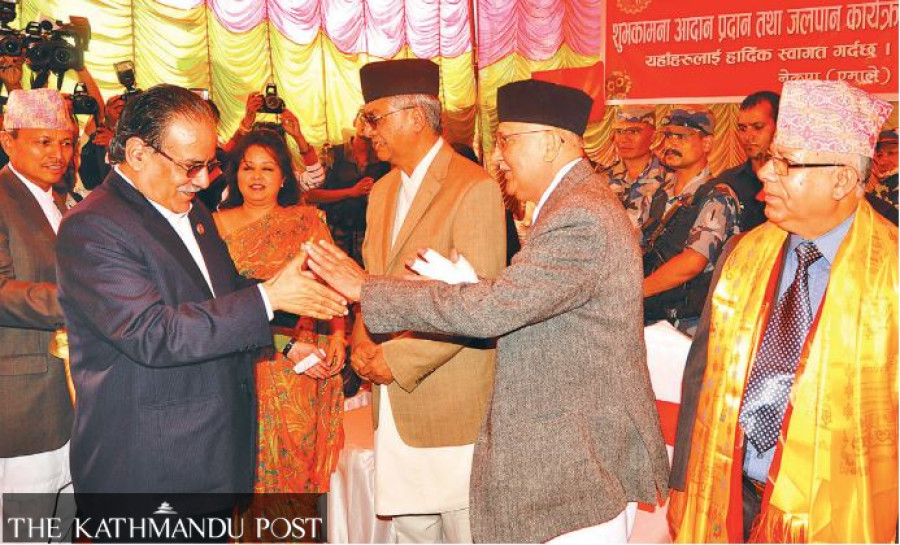
Binod Ghimire
Nepali Congress President Sher Bahadur Deuba, who last month became prime minister for the fifth time, is eyeing yet another term as party president. The party’s general convention, after repeated deferrals, has been scheduled for November.
CPN-UML’s KP Sharma Oli, who was elected party chair from the 2014 convention, has led the government twice. With his UML party split with Madhav Nepal forming CPN (Unified Socialist), Oli’s re-election to the post of party chair looks almost certain. If his reappointment after losing a confidence vote in May were to be counted, he has already become prime minister three times.
Pushpa Kamal Dahal, a two-time prime minister, has led his Maoist party, the CPN (Maoist Centre), for over three decades now. Given the internal dynamics in the party, it is unlikely Dahal will hand over the party reins to any other leader anytime soon.
Madhav Nepal’s political prospects are not clear yet. He has led the government once. On Thursday, Nepal said that he would be in active politics “for five more years” after the upcoming general elections due next year. Nepal has not hidden his desire to lead the government if he gets the chance.
Since the restoration of democracy, the country has been ruled by the same set of people, who many say have failed on almost all occasions. Ever since the election to the first Constituent Assembly, Nepal, Dahal, Deuba and Oli have been governing, punctuated by brief terms of Baburam Bhattarai, Jhala Nath Khanal, the late Sushil Koirala and Khil Raj Regmi.
Observers say time has come for Nepali political parties to consider if there should be a two-term cap for leaders—both for leading the party and the government.
“I don’t think the next generation will get to lead the government or party anytime soon,” said Rajendra Maharjan, a political commentator. “There has to be a constitutional ceiling barring a person from leading a government for more than two times.”
The recent split in the UML amid the waning relevance of the Communist Party of Nepal (Maoist Centre), the Congress is most likely to emerge as the single largest party during the next general election in 2022. In that case, Deuba, who is likely to be re-elected as party president from the upcoming general convention, could once again become prime minister, for the sixth time. The most probable alliance will be between the Congress and the Maoist Centre. In that case, an arrangement between Deuba and Dahal to govern by turns cannot be ruled out.
If Oli’s UML emerges as the single largest party, Nepalis are set to see him take the government reins once again. Madhav Nepal’s chances, however, do not look promising. But since politics is a game of immense possibilities, nothing can be ruled out.
Some argue that it would be wrong to put a cap on the number of terms, as it is not in practice in parliamentary democracies, hence the current system should continue. But they admit that the way Nepal’s political parties function, people are set to be governed by the same set of faces, who have been tried and tested.
Leadership handover, however, is not something that Nepal’s political parties have not debated. But in practice, Nepali parties have been too traditional. The seniors have an uncanny penchant to remain on top and second-rung leaders have failed to challenge them.
Until a few months ago, Oli had made public statements that he had no desire to repeat as prime minister or party chair. But it was when he was prime minister and his position had become untenable. Many wondered if he really meant it or he was making the statements for public consumption.
After his ouster following his House dissolution decision in May, second time in less than six months, Oli has changed his tone. He has been claiming that his UML would emerge as the largest party and it will lead the government, in an indication that he would return to power again.
With some promising youth leaders like Ghanshyam Bhusal, who had stood strongly against Oli’s misadventures and attacks on the constitution, deciding to remain under Oli, there is little chance they could put up a resistance to his aspirations.
Maharjan says the problem is not the number of terms. It is rather the degradation of political culture and morality among Nepali politicians.
“The parties should at least build a system so that the power transfers within parties are automatic,” said Maharjan. “That would automatically decide who from which party comes to lead the government.”
According to Maharjan, given Nepali politicians’ reluctance to hand over power, it’s impossible to ensure leadership change without a strong constitutional provision.
Nepal’s constitution has set the term limit for the President—one person can serve for two five-year terms—but it does not say anything about the prime minister.
“Actually there should be a cap on the number of terms for politicians to lead their parties as well,” said Vijay Kant Karna, a professor of political science at Tribhuvan University. “However, such a system should be adopted after holding thorough consultations within society and the parties.”
Since major parties are holding their general conventions, according to Karna, it could be a good time and opportunity to discuss the issue.
“Youth leaders should take the lead in such discussions and they must come forward,” Karna told the Post.
Top leaders of major parties in Nepal are either 70 years of age or above.
Deuba is 75. Oli is 69. Dahal is 66. And Nepal is 68.
Unless the party top brass decides voluntarily to hand over the party leadership to the younger generation, only a constitutional provision can force them to step down.
To amend the constitution, it needs a two-thirds majority in Parliament, which is not possible without consensus among the major parties.
The Constitution of Nepal needs to be revised to adopt the provision which needs a two-thirds majority in Parliament. It needs a consensus among a majority of the parties to secure the strength.
Analysts say age should not be viewed as the only factor to ensure good governance and parties’ internal democracy, but with changing times, it would be in the larger interest of the public and the country if there was smooth transfer of power from one generation to another. When politicians talk about Nepal’s demographic dividend, top leaders should not hesitate to ensure youths’ fair representation in party leadership and governance as well, according to them.
Approximately 20.8 percent of the total population of Nepal falls in the age group 16-25 years while 40.68 percent are aged between 16 and 40. Over 59 percent of the country’s population is aged 15-64 years, as per 2011’s national census. Only five percent of the population is above 65 years of age.
The Post’s attempts to solicit views from some youth leaders in parties on leadership handover went unanswered.
Meena Vaidya Malla, a former professor of political science at the Tribhuvan University, says it is the youth leaders who should raise their voices and take initiatives to press the party brass to ensure leadership handover.
“If the term cap on leadership is ensured in the party, changes can be seen in government leadership as well,” said Malla. “It’s not that the issue of transfer of power has not been raised, but it’s raised only occasionally.”




 15.76°C Kathmandu
15.76°C Kathmandu


